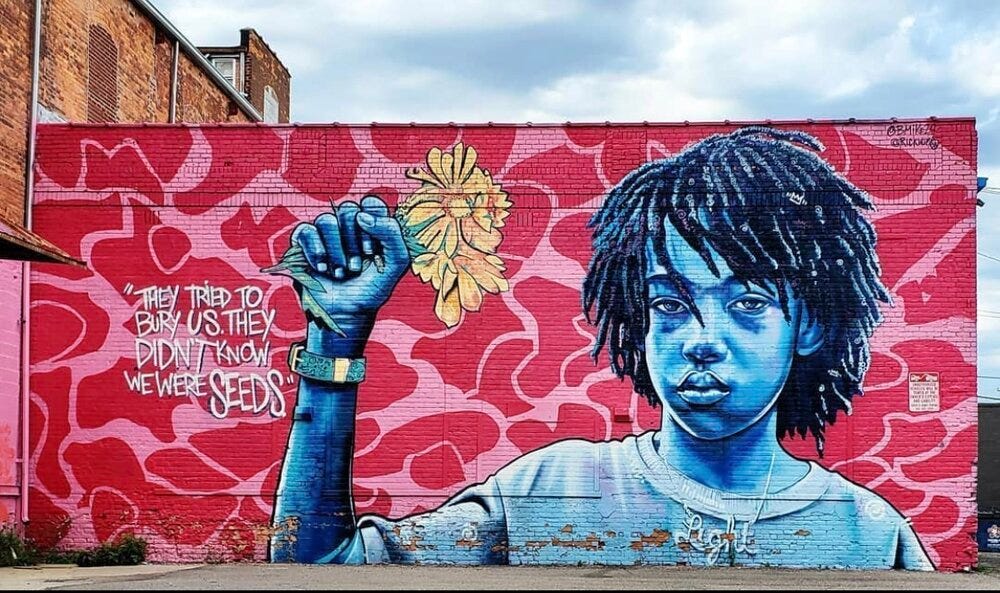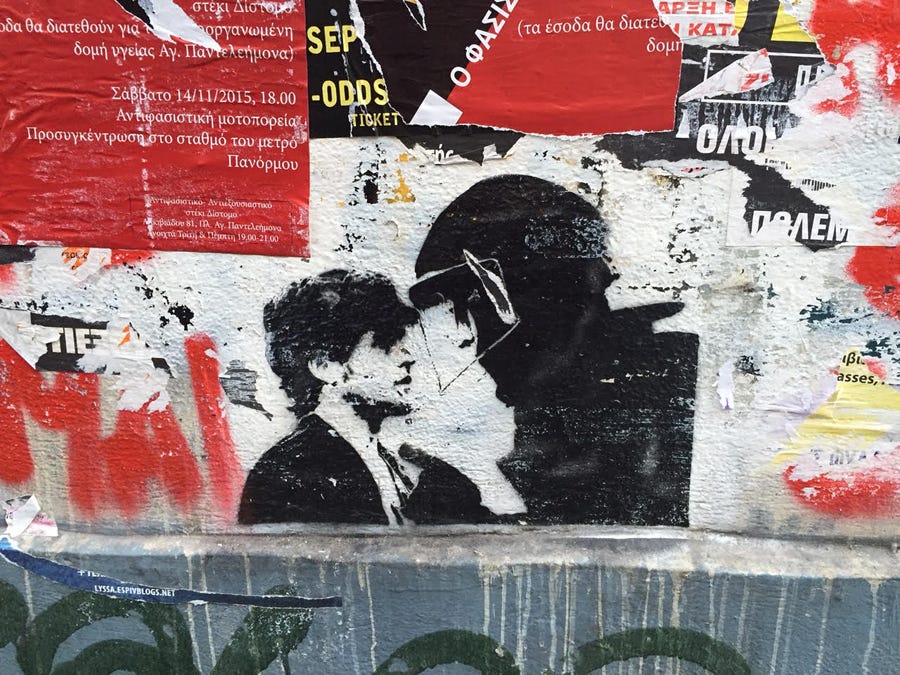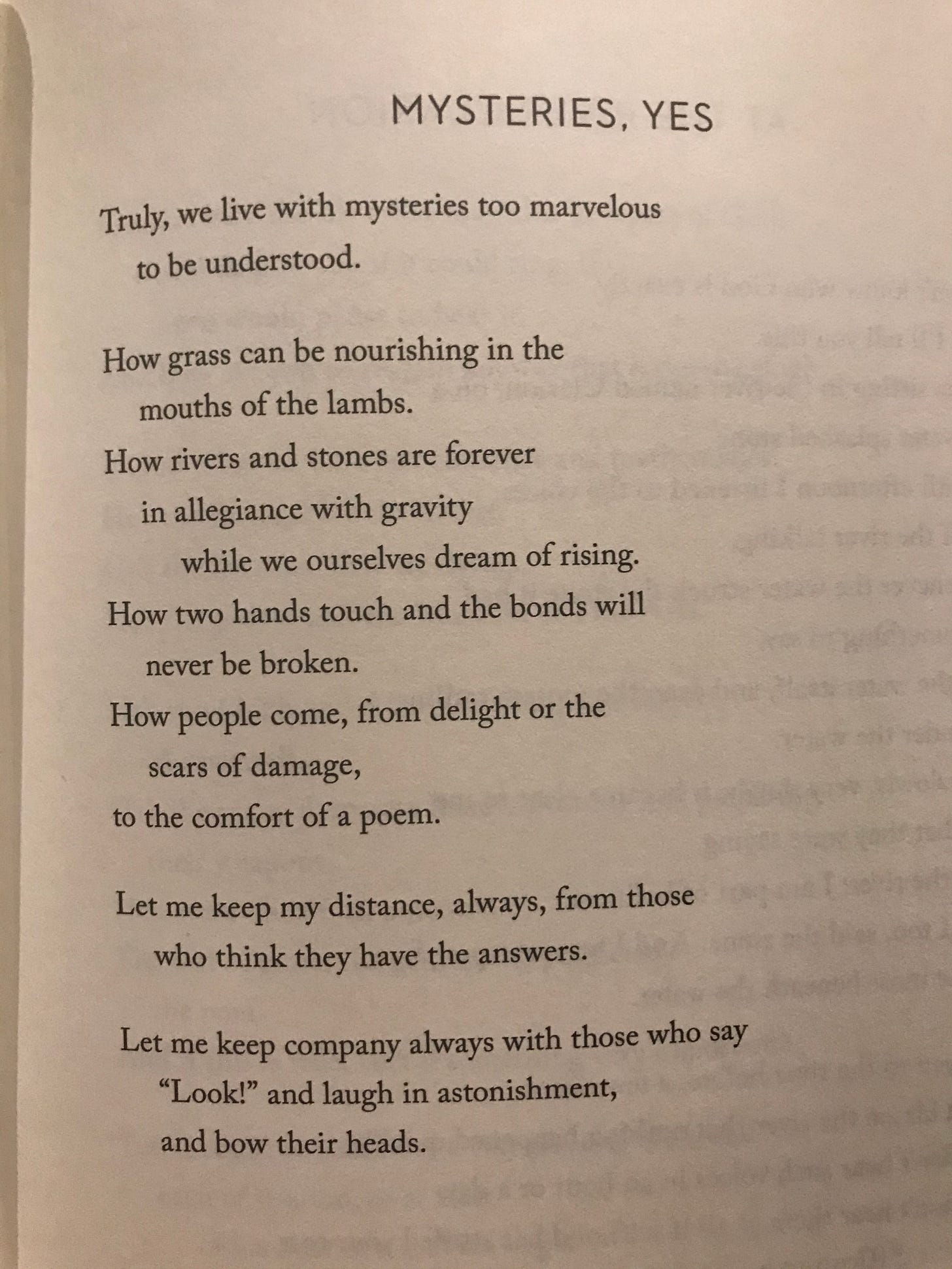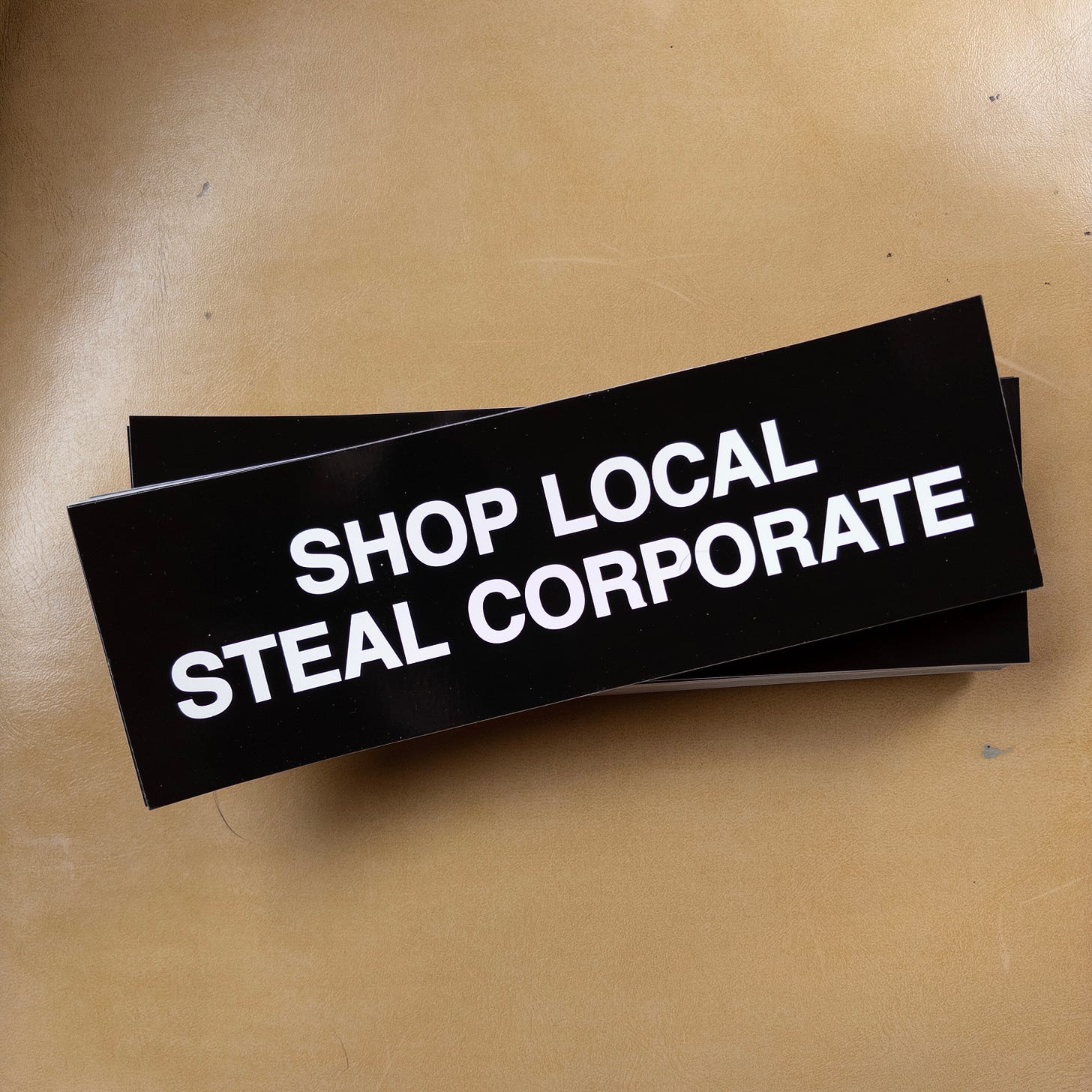An Ecosystem of Change: Why Every Role Matters in Activism
There's a place and role for you, no matter what your circumstance.
There’s a thing that happens to a lot of people, this thought-loop, this self-dismissing spiral, where you start to think about activism or fighting fascism and immediately go: That’s not for me. Not because you don’t care. You do care. Probably too much. Maybe so much that the idea of trying and failing or trying and realizing how much you can’t do is worse than just sitting it out altogether.
And then there’s the next part, which is: I have no money to donate. Or I have no time. Or I wouldn’t even know where to start. Because the mental image of “activist” is someone holding a megaphone or being interviewed on cable news or standing in a sea of people with their fist raised at just the right camera angle. And if you don’t fit that image, then you’re not it, right? You’re just some person scrolling through bad news on their phone at 2 a.m., thinking someone should do something and knowing, with painful certainty, that someone is probably not you.
Except that’s bullshit. That’s a trick, a stupid and insidious way to keep people stuck. The reality is this: movements are ecosystems, not talent shows. They need people who do paperwork, who babysit for exhausted organizers, who make sandwiches for people at a sit-in. They need people who send one email or make one phone call or just answer yes when someone asks, Hey, can you help with this one thing?
The big secret is that nobody feels qualified. Nobody feels ready. But activism isn’t about who you are, it’s about what you do. And what you do can be something small. Small is still movement.
We often think of activist movements as built entirely of speeches and marching feet, of banners held high and voices raised against the air, sharp as sirens. It is easy to believe in the iconography of the movement—the photograph of the woman standing before the police line, the clenched fist raised in defiance, the slogans painted in thick strokes on cardboard. But beneath the images, beneath the moments that are remembered, there are the unspoken, the unseen, the hands that do not hold megaphones but still shape the course of things.
Every movement has its leaders, the ones who write the statements, call the press, stand before the crowd and say, this is why we are here. But a movement is not just the sum of its rhetoric. It is the person who brings the bottled water, who tapes signs to the backs of people’s jackets, who stands at the edge of the protest handing out masks and snacks, gauze and earplugs, things that are needed but not dramatic enough to be documented.
There is the one who keeps the records, who writes down who was arrested and who needs bail, who has the phone numbers memorized and a steady voice when panic rises. The one who texts, who checks in, who says are you okay? There is the medic who shows up with gloves and bandages, who washes the pepper spray from burning eyes. The driver waiting three blocks away with the engine running, just in case.
Movements are built by those who stand in front of microphones, yes, but also by those who sew, who cook, who type, who whisper. Someone makes the flyers. Someone designs the graphics. Someone calls the city council, again and again, their voice patient, unwavering. Someone watches the livestream from home, updating social media with locations, warnings, safe routes. Someone reminds everyone to eat.
There are those who do not march at all, who stay behind to watch the children, to prepare the legal defense, to make space for those who do. Those who open their homes, set out blankets, listen. There are the ones who put their bodies between others and danger, and the ones who carry the weight afterward, who sit with the grief, who understand that anger and exhaustion and sorrow are all part of the same thing.
A movement is not just a moment. It is not just the speech or the confrontation or the victory. It is the quiet persistence, the daily work of care and organization, the hands that pass the microphone and the hands that hold someone upright when their knees give out. It is made of those who keep going, even when the cameras turn away.
And it has always been this way.
Movements, real world shifting movements, the ones that matter, the ones that actually change things, are never some kind of exclusive club for people with megaphones and unlimited stamina. They know that it isn't the loudest or the most physically present or the ones with the most disposable time and energy that count. Any movement that can’t hold space for single mothers or disabled people or the chronically overworked is a movement that has basically given up on half the population before it’s even begun.
And the thing is, people want to help. People want to be part of something that matters. But if the only options you’re offering them involve being able to spend six hours on their feet in a crowd inhaling tear gas, you are—whether you mean to or not—closing the door in the faces of a lot of people who would show up in a second if you just gave them another way to do it.
Because there’s always another way. Someone has to watch the kids. Someone has to keep track of bail funds. Someone has to send the texts, write the emails, make the spreadsheets, document what happens, listen. Someone has to check in and say, Hey, you’ve been on the front lines for three weeks straight, do you need to crash on my couch and eat something that isn’t a granola bar?
Not everyone has to march. Not everyone has to chant. But everyone can do something. And that something matters. The movement isn’t just the people in the streets. It’s the whole invisible network of people making sure the ones in the streets don’t collapse.
Here is a list I've collated of potential roles. It is limited by my imagination. Feel free to chip in more in the comment section as well.
Leadership & Strategy
Organizer – Plans events, coordinates efforts, and keeps the movement structured.
Spokesperson – Represents the movement in media and public discussions.
Strategist – Develops long-term goals and effective action plans.
Policy Advocate – Works to change laws and policies through lobbying and legal efforts.
Mediator – Resolves conflicts within the movement and fosters unity.
On-the-Ground Action
Protester – Participates in demonstrations and direct actions.
Legal Observer – Monitors and documents police and protester interactions.
Street Medic – Provides first aid and medical support to activists.
Security Coordinator – Ensures safety at protests and events.
Mutual Aid Coordinator – Organizes food, shelter, and supplies for activists.
Communication & Outreach
Social Media Coordinator – Spreads awareness and mobilizes people online.
Community Liaison – Builds relationships with local groups and organizations.
Artist/Designer – Creates posters, banners, graphics, and protest art.
Photographer/Videographer – Documents protests and actions for visibility.
Educator – Hosts workshops, writes materials, and informs the public.
Support & Logistics
Fundraiser – Raises money for legal aid, supplies, and organizing efforts.
Tech Supporter – Helps with cybersecurity, website management, and digital tools.
Safe House Provider – Offers shelter or refuge to activists in danger.
Legal Aid Volunteer – Provides legal advice and helps with bail funds.
Researcher – Gathers information to support the movement’s goals and strategies.
Care & Well-Being
Child Care – Looks after the children of those doing other roles.
Food Preparation – Makes meals for those in the movement.
Therapy & Counseling– Professionals who provide care to key folk within the movement.
POEM OF THE WEEK: Mysteries, Yes by Mary Oliver
ICYMI: New 'Shop Local. Steal Corporate' sticker
$4 each or five for $16 - available from my store
Until next week - Be Excellent To Each Other 🤘 dg
PLAYLIST
Spotify🪀:
Apple Music🍎: https://music.apple.com/us/playlist/in-allegiance-with-gravity/pl.u-mJy8Zj7tBePKDE






